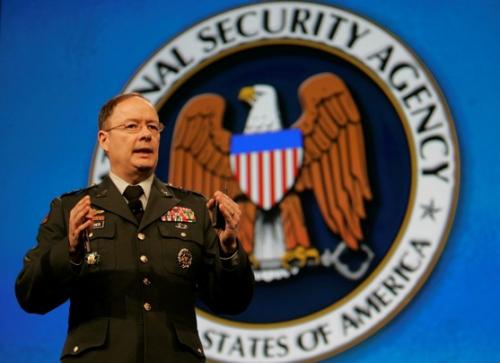A shadowy hacker group in the Middle East has disrupted the electronic banking operations of some of the United States’ largest financial institutions, The Seattle Times reported.
But this is hardly new. Five years ago, Goldman Sachs’ chief technology officer reported this venerable financial institution had sustained more than 1 million “intrusion attempts in a single day.”
A military cybernaut expert, speaking privately, said the Pentagon sustains up to 6 million such probes a day. How many were successful remains highly classified. But one Pentagon cyber expert said the vast building’s internal communications system was disrupted once for 48 hours. The number of hostile hacker penetrations remains top secret.
At Wells Fargo, U.S. Bancorp and Bank of America, the Seattle newspaper reported, a group identifying itself as Izz ad-Din al-Qassam Cyber Fighters attacked their websites and “left customers temporarily unable to access their checking accounts, mortgages and other services.”
Electronic crime is a fast-spreading plague. In recent years, there have been massive denial-of-service attacks. Computers are flooded with communications demands that cause systems to back up, seize up and shut down.
These Islamist cyber fighters said their attacks would continue until a video that insults Prophet Muhammad and triggered riots from Indonesia to Pakistan to Egypt to Libya is removed from the Internet. The 15-minute video, the work of a rank amateur, went viral several weeks ago and can no longer be deleted.
Cyber terrorists have been lurking the ‘Net a lot longer than the offending video. And critical electronic infrastructure — from valves that regulate water flows from dams to air traffic control and transnational banking systems — is vulnerable everywhere.
Israel and the United States have been waging electronic warfare against Iran’s secret underground uranium enrichment activities. Clearly, Iran is retaliating by using electronic terrorist groups, both homegrown and Middle Eastern.
In mid-September, the FBI warned of “a new trend in which cyber criminal actors are using spam and phishing emails” as weapons to attack the global networks of financial institutions.”
This week, speaking at a Woodrow Wilson International Center meeting devoted to the growing cyber threat, U.S. Army Gen. Keith B. Alexander, chief of the U.S. Cyber Command (also head of the National Security Agency), since it was launched two years ago, said the cyber threat has grown in 10 years “from exploitation to disruption to destruction of computer networks.”
Russia understood this when the Soviet Union collapsed. The old Soviet Federal Agency for Government Communications and Information quickly became a cyber command as the new Russian leaders gave priority to one area where they could perhaps compensate for U.S. military and economic superiority.
This gave the Kremlin a two-decade lead over the United States. USCYBERCOM under Alexander wasn’t activated until September 2010. China activated a cyber command in the mid-1990s.
This week, Alexander said cyber attacks that would crash stock exchanges and markets “are all possible today.” He also said “education is the key to understand what’s already happening.”
At the same event, U.S. Sen. Susan Collins, R-Maine, ranking member and former chairwoman of the Homeland Security Committee, said “over 200 cyberattacks against our national assets, such as critical water treatment and transportation networks are just the tip of the iceberg.”
Collins said she was most concerned about an attack on the nation’s electric power grid. The electronic stealing of intellectual property is critical and already with us round the clock.
“Imagine,” she said, “if someone had stolen iPhone5 information and got to market first.”
Some company intrusions simply plant an electronic spy to monitor — and steal — proprietary secrets.
Massive electronic threats follow on the heels of massive physical infrastructure threats — the vast system of highways, bridges, airports, railroads, pipelines, power lines, dams, waterways, water treatment plants, schools and other publicly owned and publicly regulated facilities, all dangerously neglected as hundreds of billions were spent on two wars in Iraq and Afghanistan.
Iraq was a pure waste of $1 trillion with the net result that Iran now has more influence in Baghdad than Washington. Al-Qaida, terminated by the late Saddam Hussein, is also operating and recruiting in Iraq.
And the Afghan War, now opposed by 70 percent of Americans, where Afghans trained by the United States are killing their U.S. advisers and where the tab has reached $600 billion, appears to be headed for a costly and controversial finish.
If the United States under President Obama or President Romney decides to see the Afghan war through the end of 2014, the total tab will be another $1 trillion. And the U.S. deficit, now at $16 trillion, will continue to grow correspondingly.
2015, and hopefully sooner, should see the beginning of a massive home front surge to restore the United States to its once global grandeur.
Infrastructure needs alone are estimated at $3 trillion over five years. Global vision is blurred today. But the United States’ needs in Afghanistan aren’t. They are to disengage ASAP.
Arnaud de Borchgrave, a member of the Atlantic Council, is editor-at-large at UPI and the Washington Times. This column was syndicated by UPI.
Image: ap%204%2010%2012%20Keith%20Alexander_0.jpg
